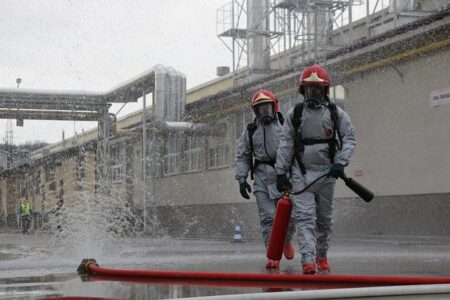Significant Cyberattack Disrupts Los Angeles Unified School District Operations
The Los Angeles Unified School District (LAUSD), recognized as one of the nation’s largest public education systems, recently experienced a substantial cybersecurity breach. This incident has caused widespread operational interruptions across numerous schools and raised serious alarms regarding the protection of confidential student and employee data. District officials, in collaboration with cybersecurity specialists and federal authorities, are actively investigating the breach while working to restore system integrity and enhance digital defenses.
Emerging facts from the ongoing investigation include:
- Compromised Details: Student academic records,staff payroll details,and internal communications were accessed without authorization.
- Incident Timeline: The breach was initially detected late last week,triggering immediate containment and mitigation efforts.
- Response Measures: LAUSD’s IT department has joined forces with federal cybersecurity agencies to secure networks and prevent further unauthorized access.
| Category | Consequences | Actions Implemented |
|---|---|---|
| Student Data | Exposure of personal information possible | Alerts issued to affected parties; intensified monitoring activated |
| Employee Records | Risk to payroll and identity details | Mandatory password changes and enforced multi-factor authentication |
| IT Systems | Temporary service disruptions reported | Systems restored with updated security patches applied |
Data Privacy Implications for Students and Staff
The cyber intrusion at LAUSD has left thousands of students and staff members vulnerable to potential misuse of their personal data. Officials have disclosed that sensitive information such as social security numbers, birthdates, and educational records may have been compromised. This breach underscores the urgent need for robust data protection frameworks within educational environments, especially given the sensitive nature of the populations served.
Critical concerns arising from the breach include:
- Heightened risk of identity theft impacting both students and employees
- Interruption of academic and administrative workflows
- Potential erosion of trust between the school community and district leadership
| Type of Data | Associated Risks |
|---|---|
| Personal Identifiers | Identity fraud, financial exploitation |
| Educational Records | Unauthorized alterations, privacy breaches |
| Contact Details | Phishing scams, targeted cyberattacks |
Uncovering the Attackers and Their Objectives
Investigators and cybersecurity professionals are intensifying efforts to trace the origins of the cyberattack that infiltrated LAUSD’s network. Early findings suggest the involvement of a elegant hacking collective, potentially specializing in ransomware campaigns, even though no official attribution has been made public. Forensic analysts are meticulously examining the methods of intrusion and tracking digital footprints to identify the attackers’ entry points.
Understanding the attackers’ motivations is crucial for preventing future incidents. Experts propose several possible incentives behind the breach, including:
- Monetary Extortion: Demanding ransom payments to restore access to compromised systems.
- Data Exploitation: Harvesting personal and administrative information for resale or malicious use on underground markets.
- Operational Disruption: Intending to destabilize the educational system and cause widespread operational chaos.
| Investigation Focus | Current Status |
|---|---|
| Tracing IP Addresses | In Progress |
| Ransomware Variant Identification | Ongoing |
| Assessment of Data Security Impact | Active |
| Coordination with Federal Cybersecurity Agencies | Engaged |
Enhancing Cybersecurity to Protect Educational Systems
This cyberattack on LAUSD highlights the critical need for fortified cybersecurity measures within educational institutions. As schools increasingly depend on digital tools for governance, dialog, and remote learning, the risks associated with cyber threats escalate significantly. Proactive cybersecurity strategies are essential to protect sensitive data, ensure continuous educational delivery, and maintain community confidence.
Recommended cybersecurity practices for schools include:
- Adopting multi-factor authentication (MFA) to strengthen access controls on vital systems.
- Consistently applying software updates and security patches to address vulnerabilities promptly.
- Providing extensive cybersecurity education for both staff and students to foster awareness and best practices.
- Developing and rehearsing incident response plans to minimize damage and expedite recovery in the event of an attack.
| Cybersecurity Component | Objective | Illustrative Example |
|---|---|---|
| Network Segmentation | Restricts lateral movement of attackers | Separating administrative and student networks |
| Routine Security Audits | Detects and addresses system weaknesses | Quarterly vulnerability assessments and penetration tests |
| Data Encryption | Secures sensitive information from unauthorized access | Encrypting student and staff databases |
Final Thoughts on the LAUSD Cyberattack
As the investigation into the LAUSD cyber breach continues, district leaders have committed to bolstering their cybersecurity infrastructure to prevent similar future incidents. The challenge remains to swiftly restore full operational capacity while ensuring the protection of sensitive data amid an escalating landscape of cyber threats targeting educational organizations.Ongoing updates will provide further insights as the situation evolves.




